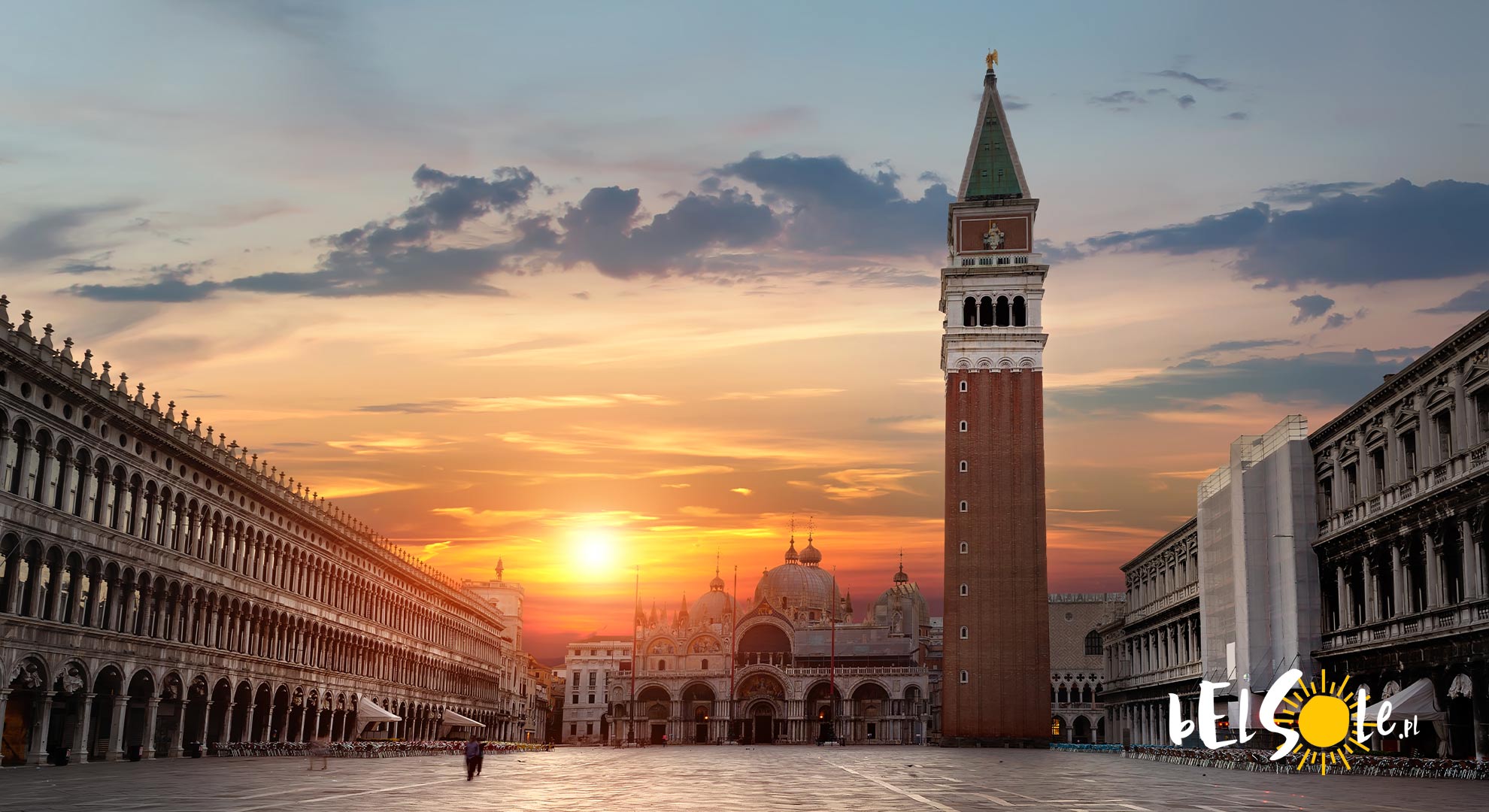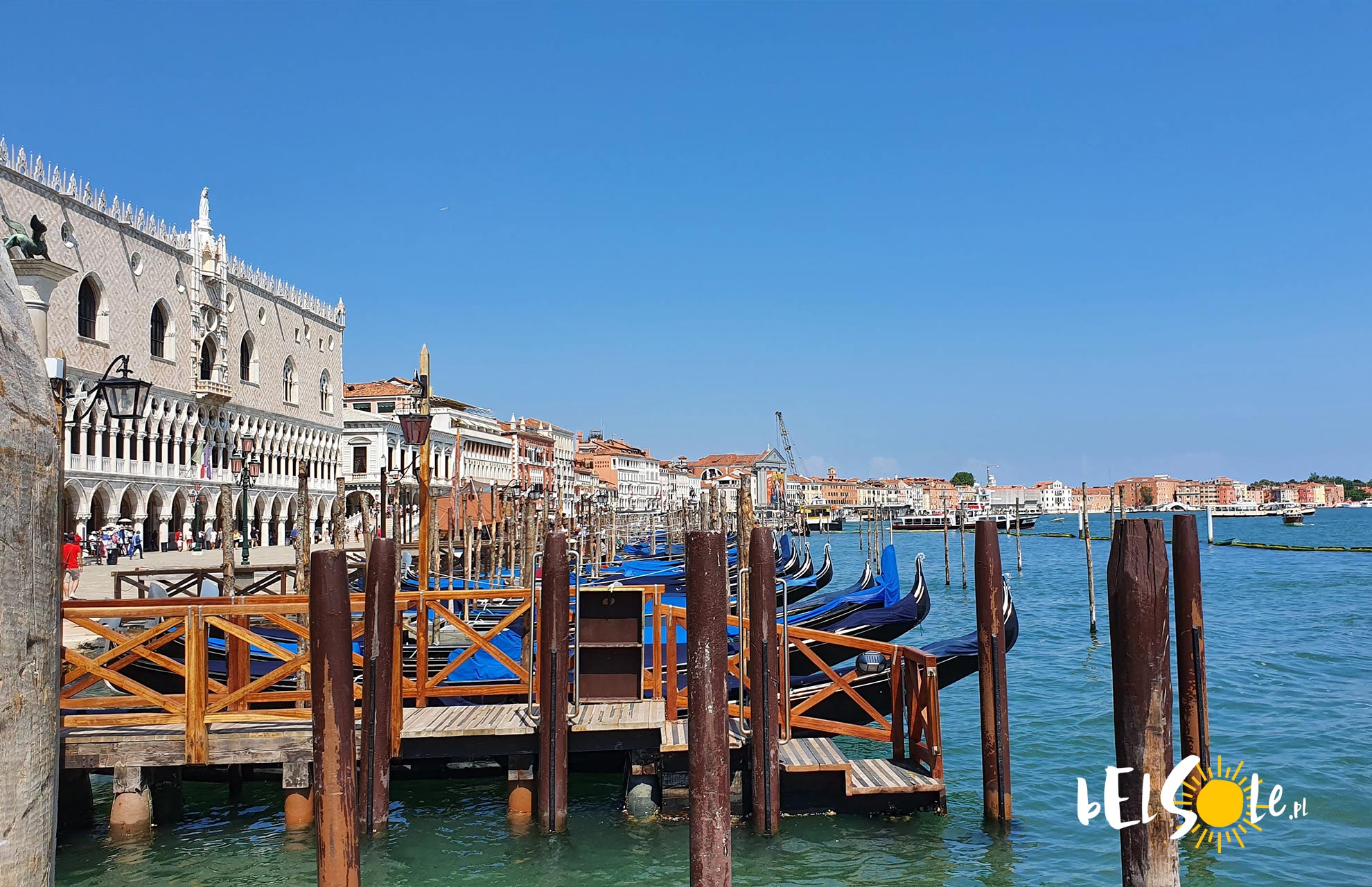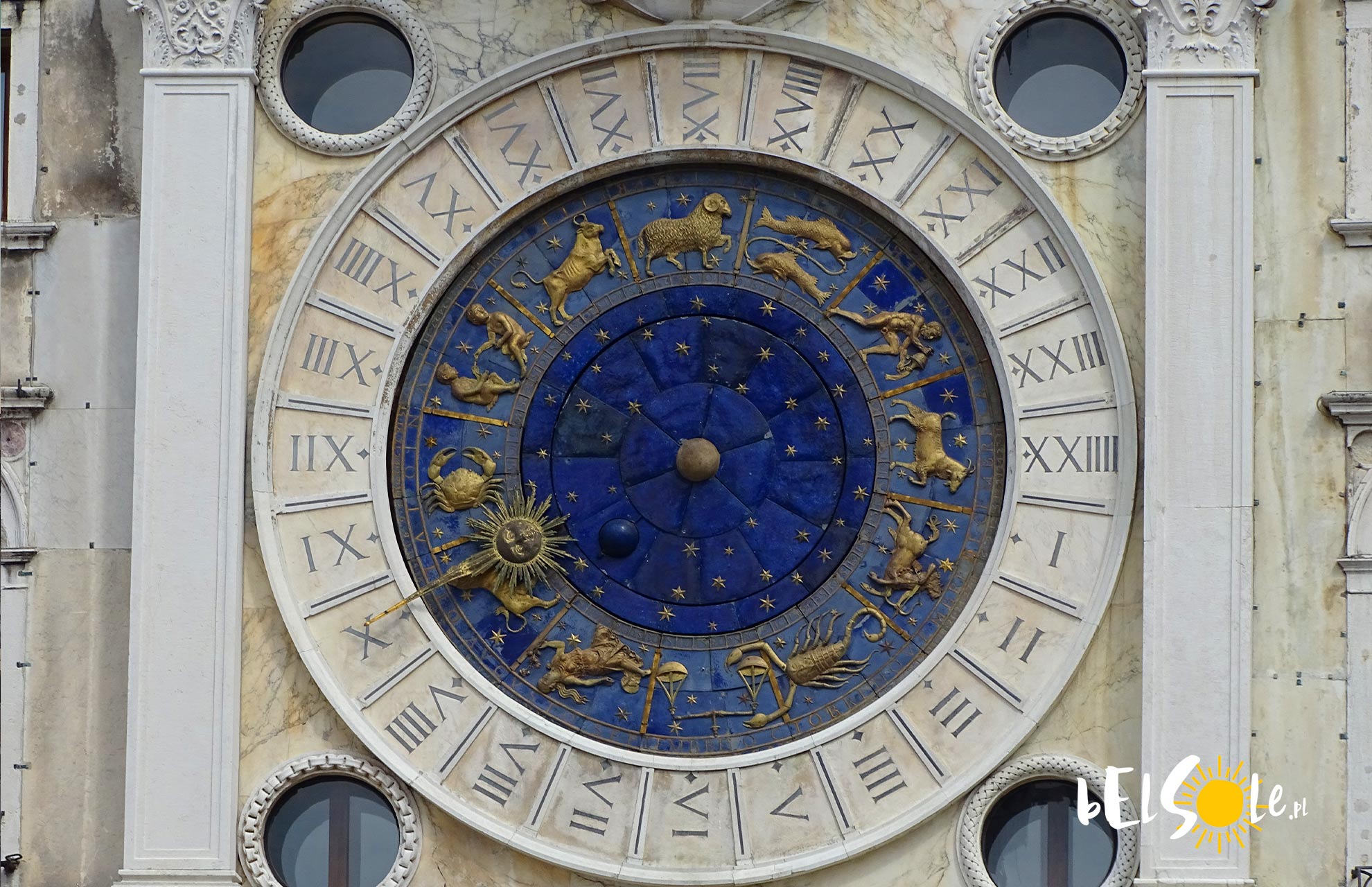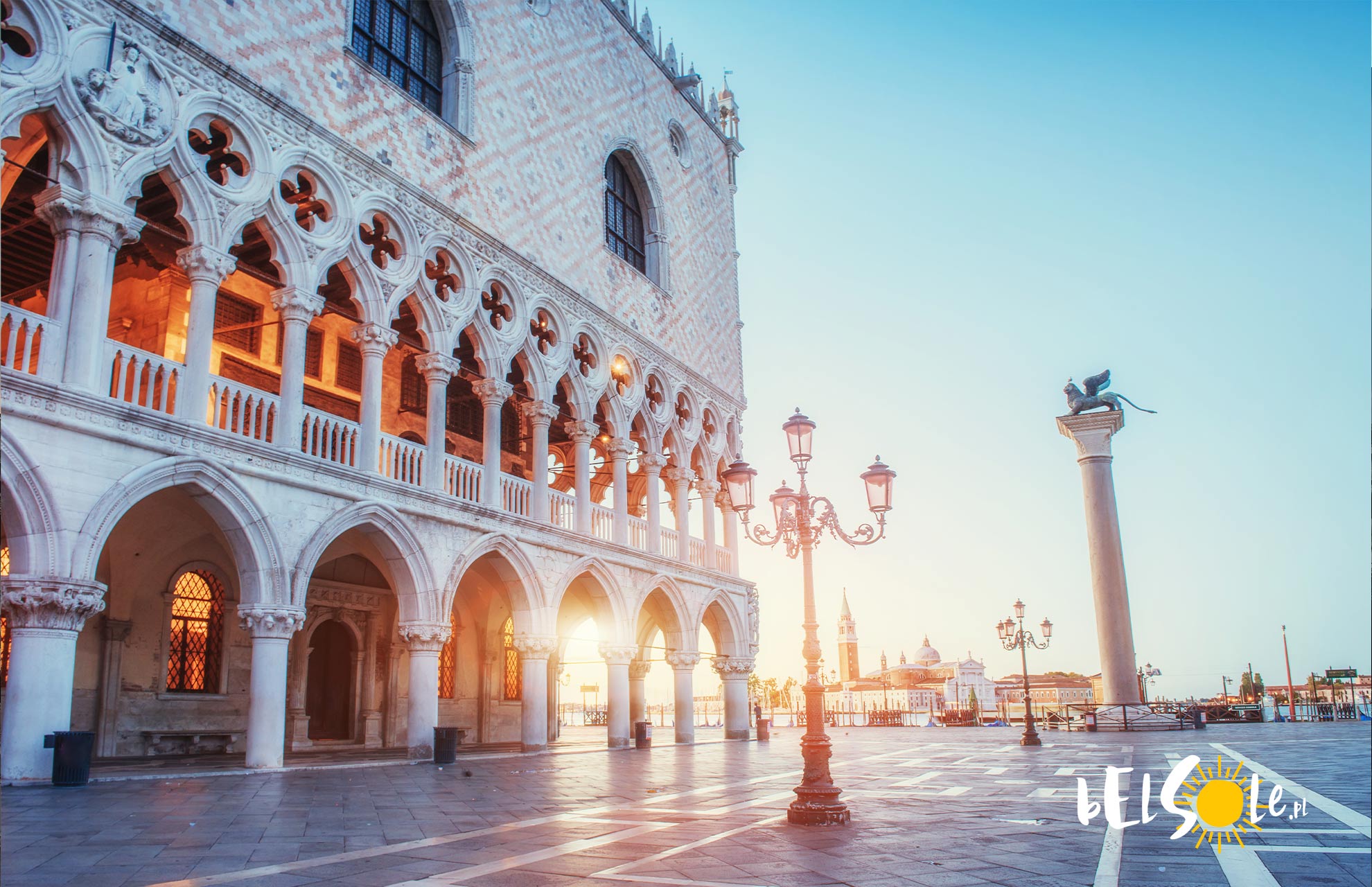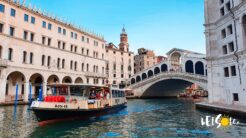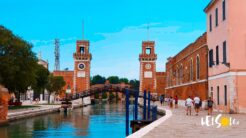St Mark’s Square in Venice is the most important place of the city, home to most of the interesting attractions here. Did you know, however, that Saint Mark wasn’t the original patron of Venice? Further, that Venice stole him in the most literal sense of the words? Today, we’ll go over all things Piazza San marco, both the history of St Mark’s Square and what it currently offers.
St Mark’s Square
What’s the square like?
St Mark’s Square, commonly referred to as just ‘la Piazza’, is the main square of Venice. Its shape is an irregular quadrangle dominated on one side by St Mark’s Basilica. The square is lined with stone and marble and it is difficult to find shade here, except under the arcades that line its edges, as it’s a massive paved open space. That space is surrounded on three sides by what is called the Procuratie – the three walls of buildings forming around the square.
What to see in St Mark’s Square?
Attractions of St Mark’s Square
The main site on St Mark’s Square is, of course, the St Mark’s Basilica – it’s very hard to miss. Note the four bronze horses above the entrance, the Horses of Saint Mark. These are replicas of the original horses stored inside of the Basilica – they come from the sacking of Constantinople during the Crusades.
On the side of the church, you have the Piazzetta dei Leoncini, a mini-square. On the south side, you have a wall with part of the Piazzetta San Marco, the open space joining the main square with the lagoon. This wall is also home to the famous Caffé Florian and the Campanile di San Marco, or the Tower of Venice.
On the shortest, western, wall is the Museo Correr.
On the longest, northern, wall, you’ll find the Torre dell’Orologio, the Clock Tower with the iconic Venetian lion above the clock, the symbol of Venice and of St Mark’s.
How to get to St Mark’s Square
Getting to St Mark’s Square
St Mark’s Square is located in the south of Venice – you obviously cannot get there by car, but you can access it via all of the transport covering the Grand Canal. You can get to the S. Marco Marina right next to the square by ferry or water taxis from the airport.
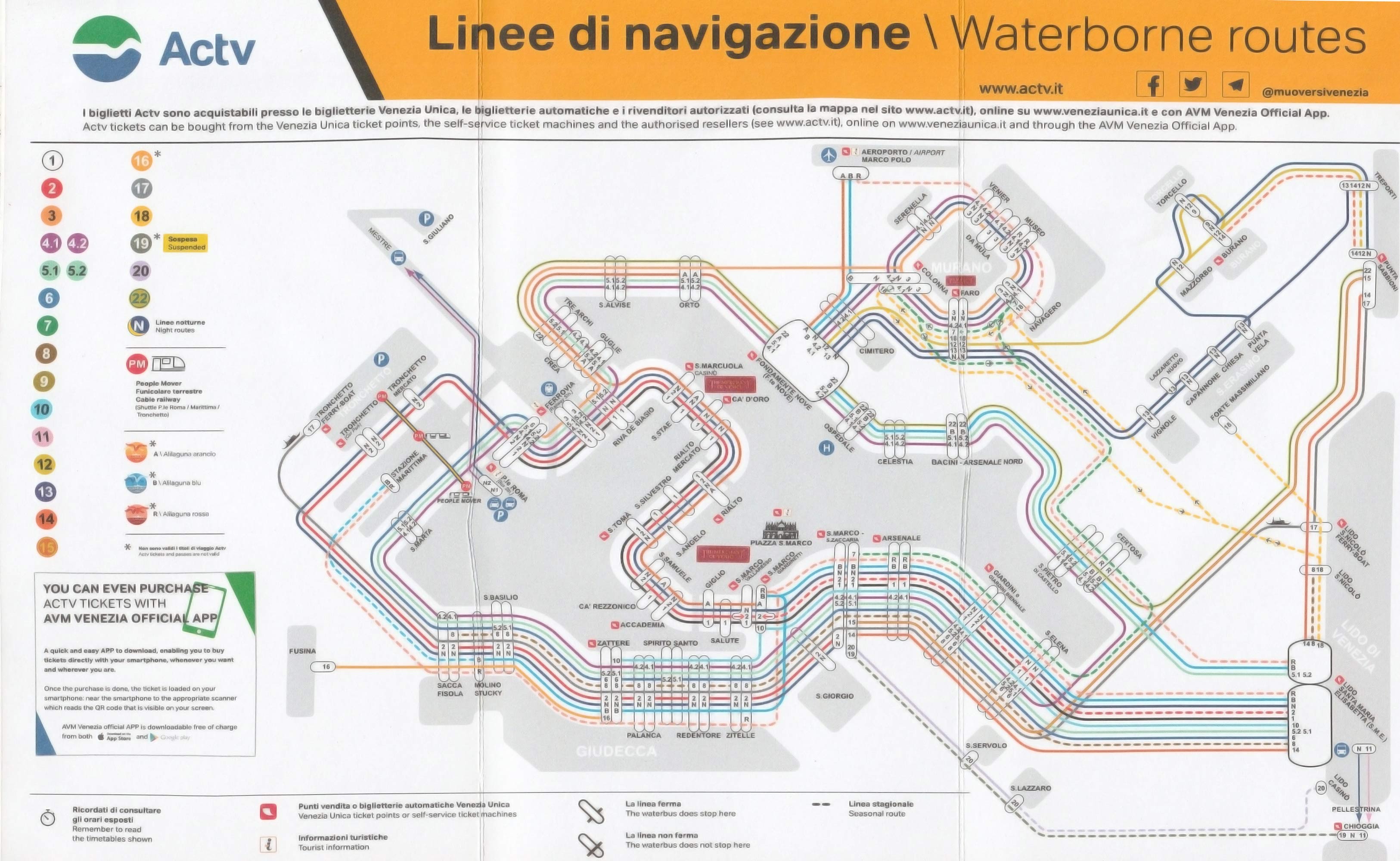
Does St Mark’s Square get flooded?
Flooding in Venice
The square is just a few metres above sea level, so it does regularly happen that the square gets flooded, especially in the colder months. You can see an example of how that looks here. Flooding is a natural part of the lifecycle of Venice, so do be mindful that it’s not impossible that it may also happen during your stay in the city.
History of St Mark’s Square
The story of Venice and its patron
The square dates back to about 819, located in the same place as today. It’s likely, however, that, if it had to have a patron, it wouldn’t have been St Mark. The first patron of Venice was St Theodore of Amasea. Where did St Mark come from then?
In 828, Venetians stole relics of St Mark from Alexandria and brought them back home. Now holding the relics of Mark the Evangelists, Venetians decided that that’s a more worthy patron for the city and began the shift towards becoming the city of St Mark. Today, his relics and body are housed in St Mark’s Cathedral. Justinian Partecipacius, the Doge of the time, decided that a new church is to be built in light of this development. This was the first iteration of the church that you can see in the square today.
As for the square, it’s likely that it was originally just a grassfield in front of the church. There were also small streams criss-crossing the field, so it wasn’t anywhere as large as it is now either. A rebellion and burning down of the church of St Mark later, the piazza was slowly being established in the 12th century, when streams were filled in and a church on the opposite side of St Mark’s was demolished to make space for the Piazza. The emergence of surrounding walls of buildings was slowly giving it the shape that we now recognise. One additional touch of that time was the aforementioned sacking of Constantinople, which gave Venetians some great marble to adorn their cathedral and square with.
At the end of the 15th century and the beginning of the 16th century, the Procuratie Vecchie and the Clocktower were built. In 1722, the two statues were brought to Piazzetta dei Leoncini and the mini-square was opened.
Piazzetta S.Marco
Little St Mark’s Square
Next to St Mark’s Square is the small Piazzetta S.Marco, which connects the harbour to the square. It houses the Doge’s Palace, the Biblioteca Nazionale Marciana and the two important lion columns of San Teodoro and San Marco.
See also:


